The Glenelg-Skye Ferry is the last of its kind. A car ferry whose deck is turned – by hand, mind you. It crosses the sea between the Isle of Skye and the mainland at a historic point.
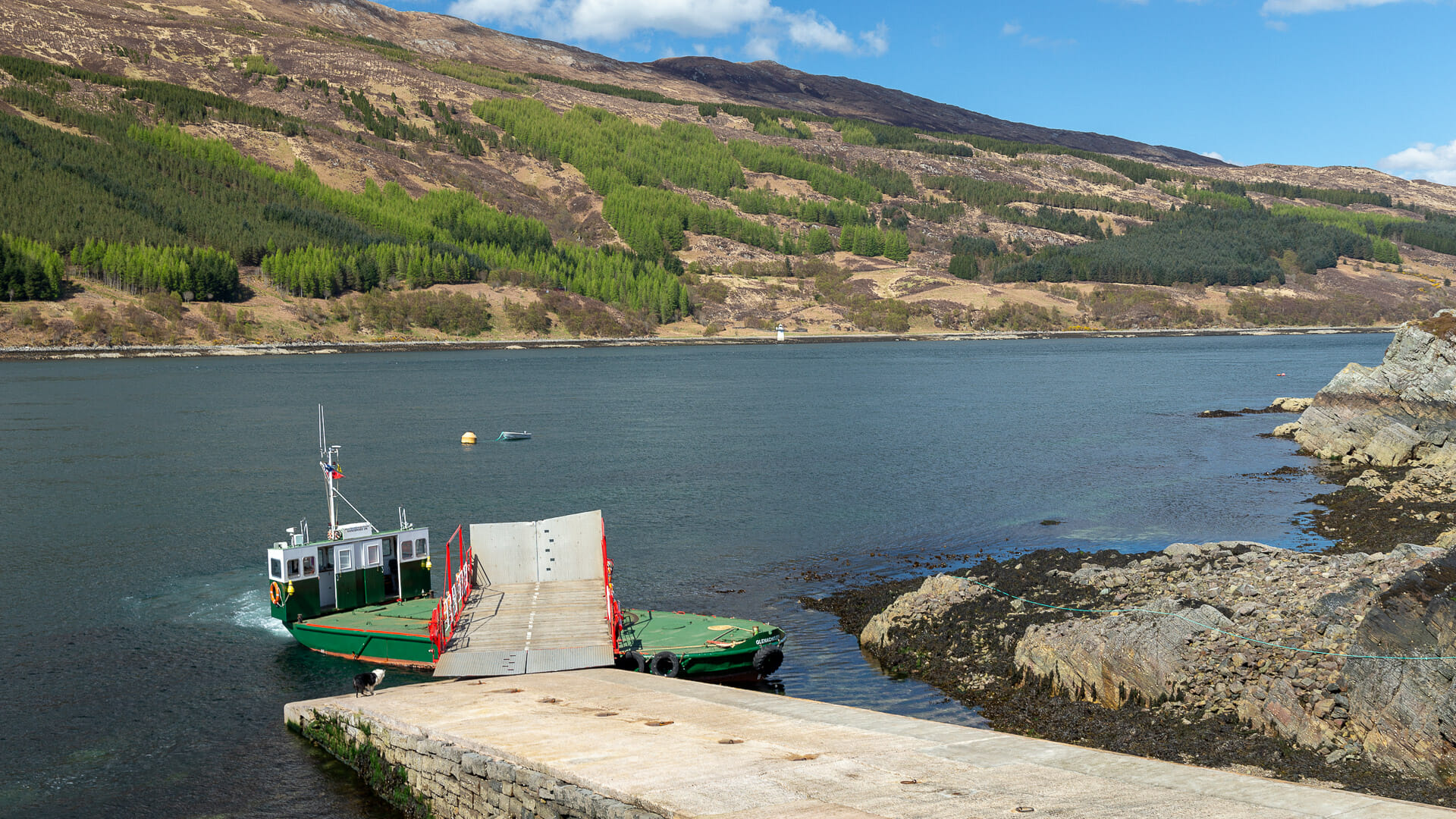
There’s barely 550 metres between Skye and the mainland opposite. But they’ve got their work cut out for them. Because whenever the land leaves little room for the sea, the currents intensify immensely when the tide changes. And so the small car ferry “Glenachulish” does a barnstorming job here, taking about six cars at a time to the other side in just five minutes.
The ferry is a real museum piece. It was built in 1969 and initially served near Ballachulish on Loch Leven. But today there is a bridge there, so it was superfluous. That’s why she came here in 1982 to serve at the strait between Kylerhea and Glenelg.
Of course, today no Skye visitor needs to take the ferry. The Skye Bridge is certainly a more convenient way to get to the “Isle of Mist.” Still, there are good reasons to take the small ferry. First of all, there is the unique landscape. Because not only the strait itself is beautiful. The approach via the Bealach Ratagain with its magnificent view is also something to behold.
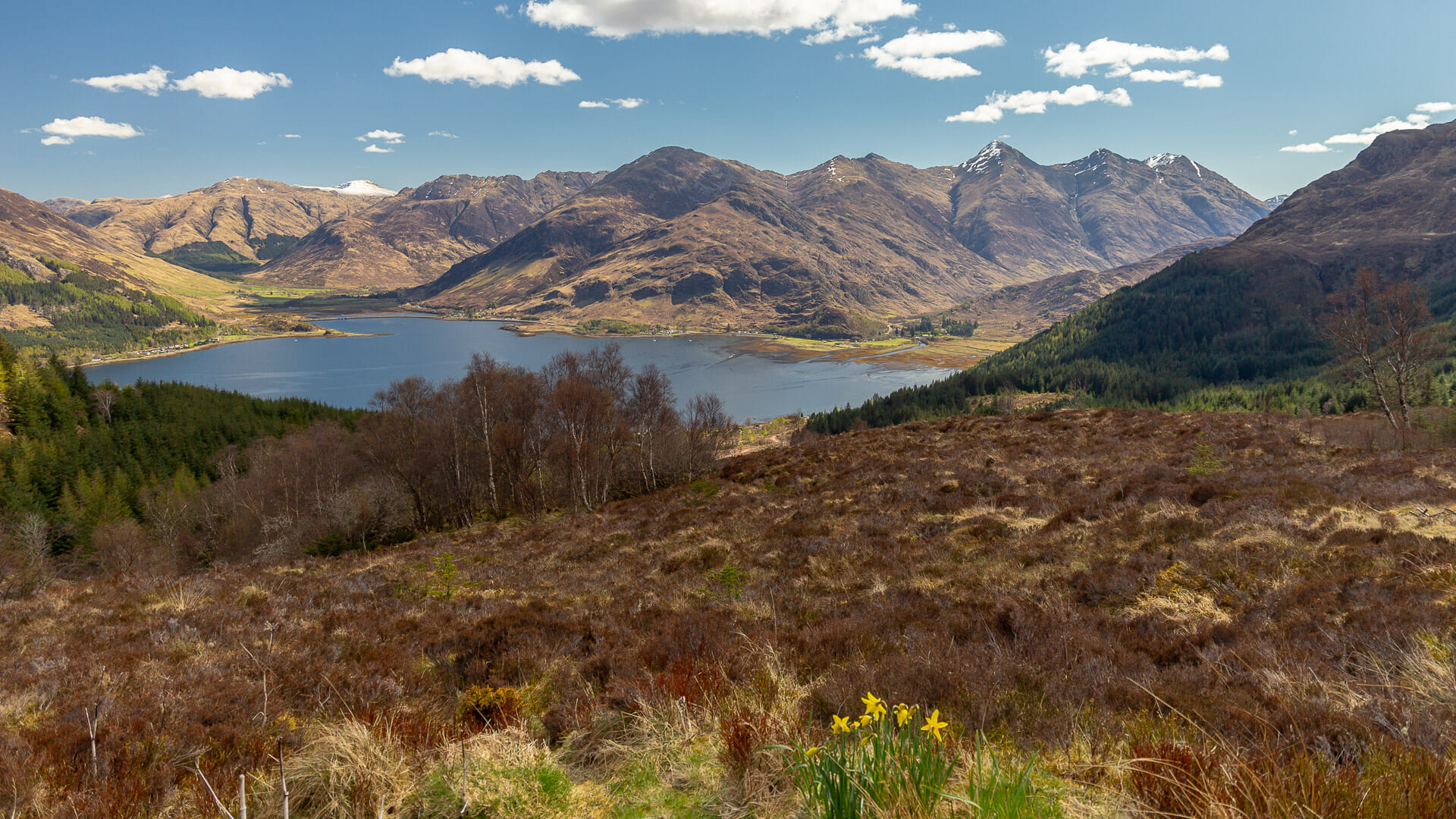
Then, on the other side of the strait, the road from Kylerhea to Breackish winds up the mountain. At the top of the pass there is another wonderful view back to Glenelg and the mainland.
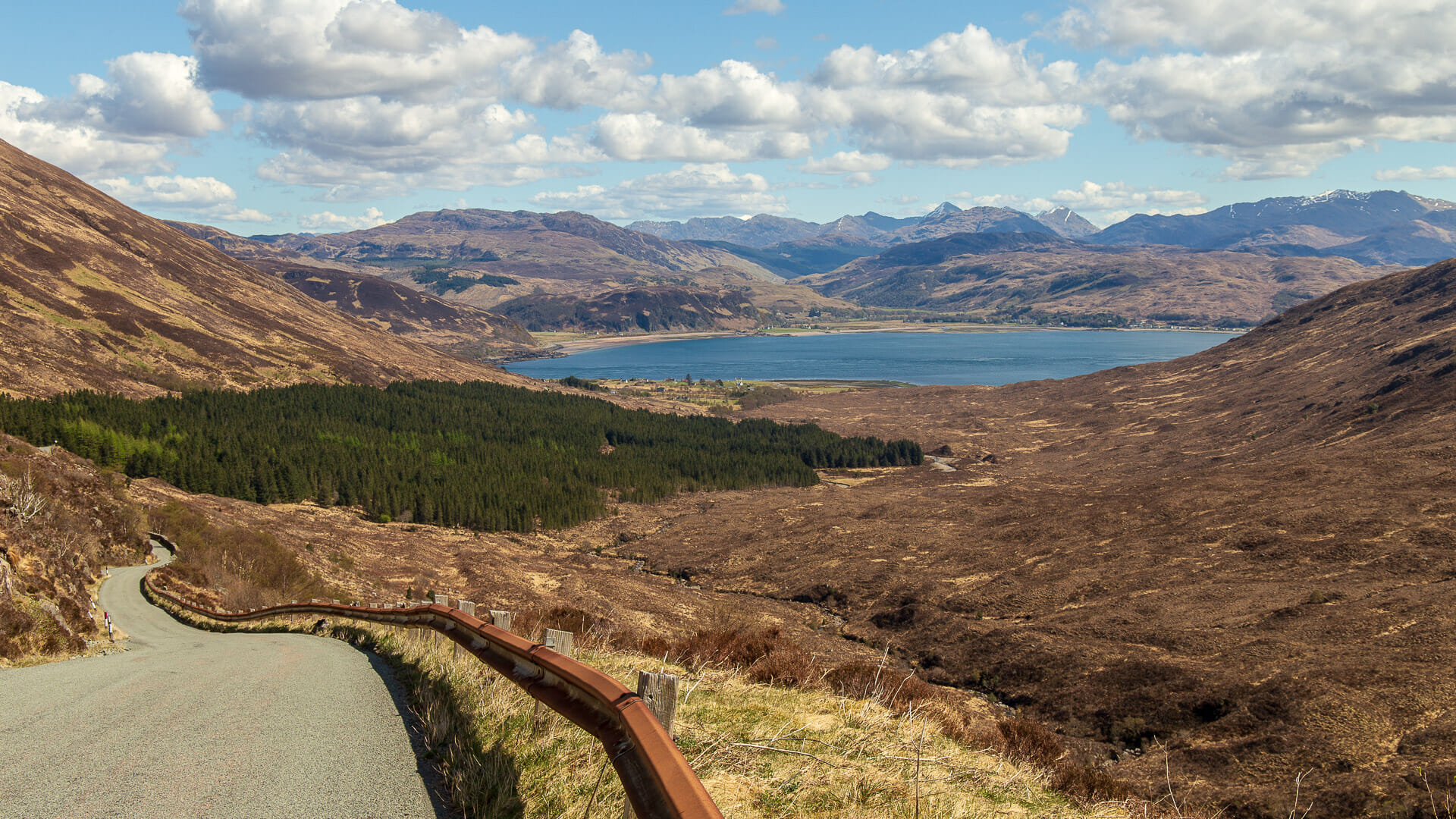
So the whole alternative route is worth it. And the fact that tourists can experience this scenery in such a coherent way is something that only the small Glenelg-Skye Ferry makes possible.
The fact that it still operates is not a matter of course. Because when the last ferryman wanted to retire, the connection was on the brink of extinction. Too remote, too unprofitable. But it was the last of its kind. However, through the community and with donations from around the world, the Glenachulish has been restored and it continues to sail the historic passage across the straits after all. Every passenger on it justifies the continued operation of the old boat.
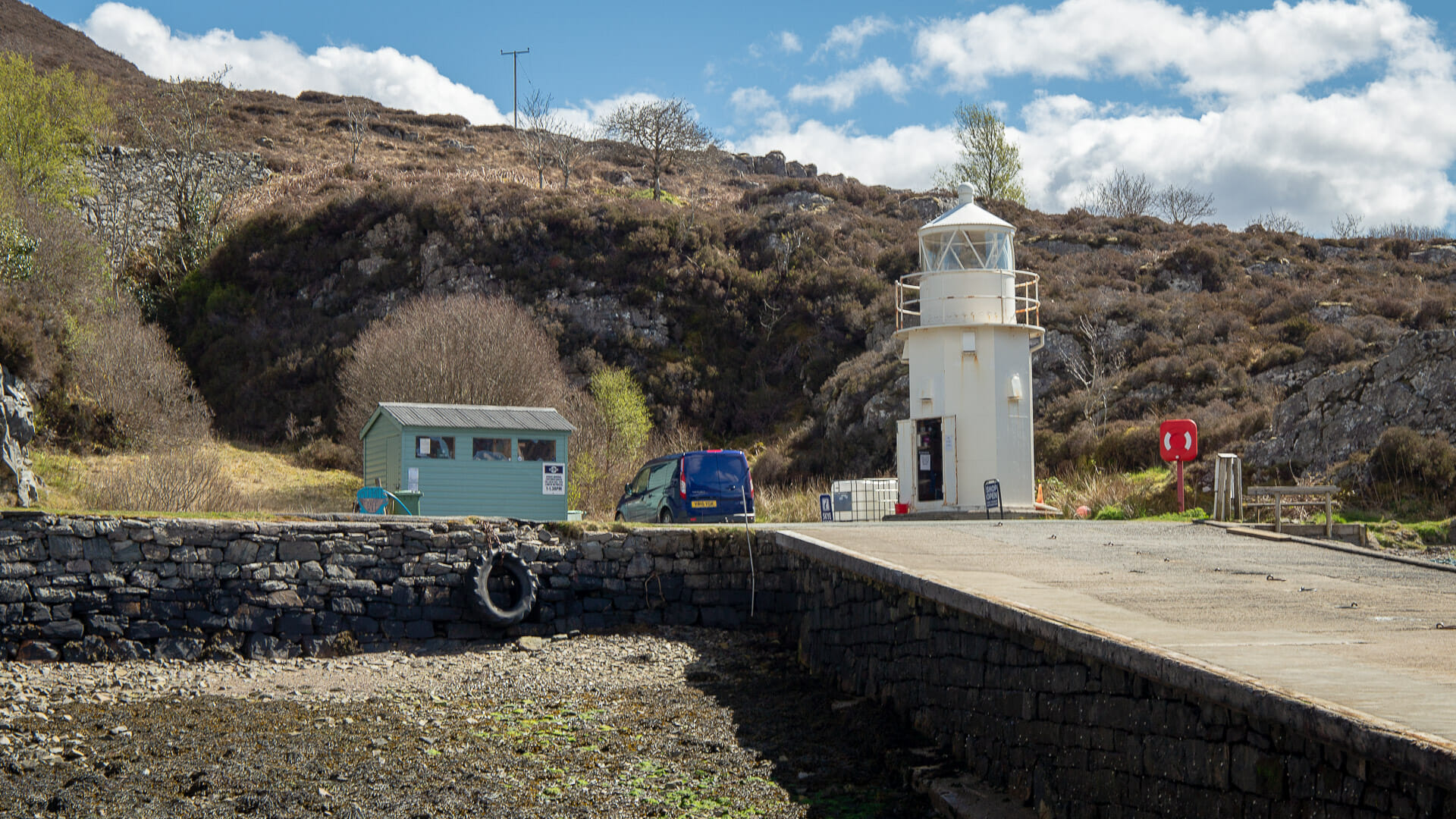
What makes the Glenachulish so special is, of course, her deck, the “turntable”.
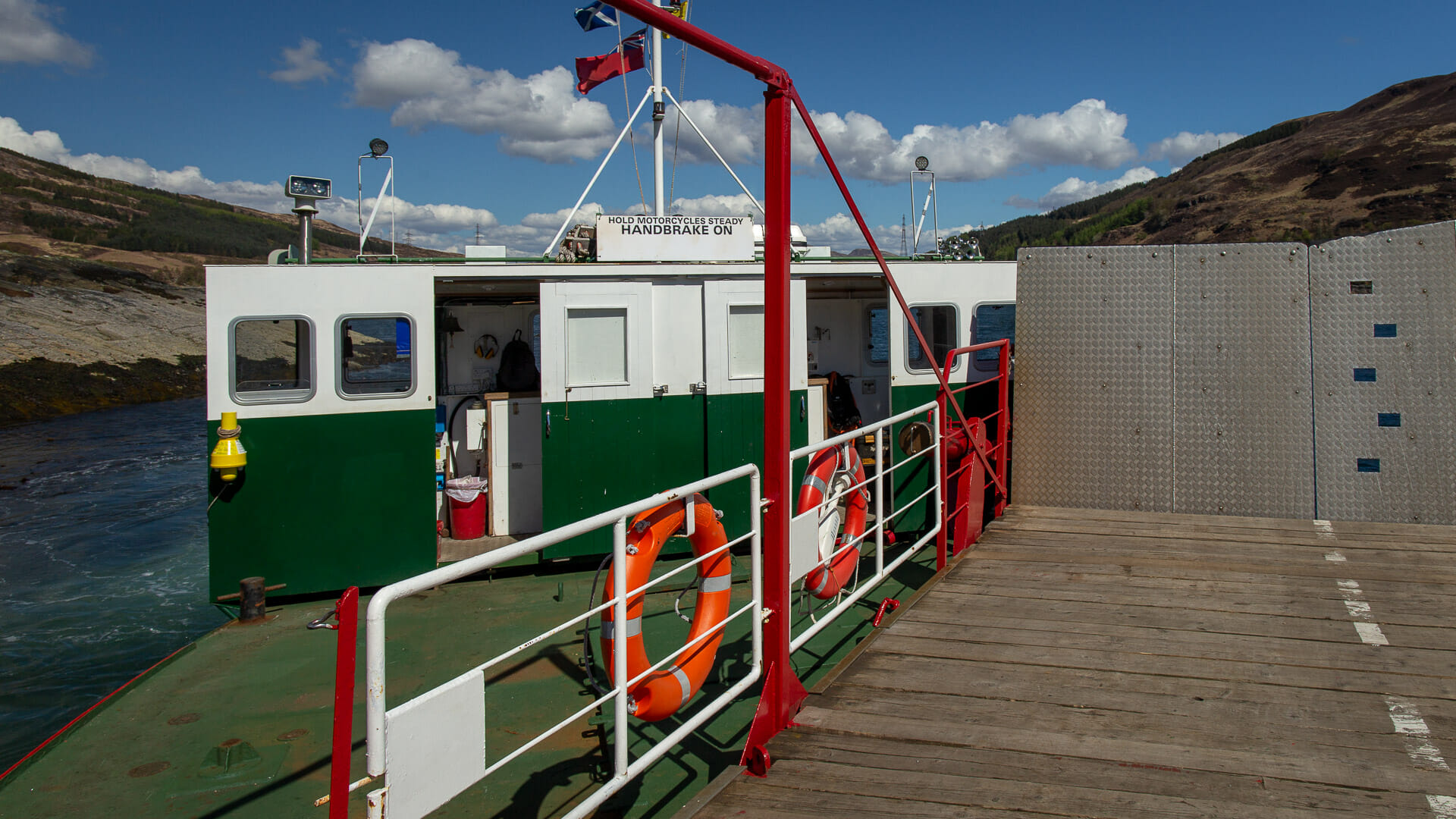
The ferry always docks from the side in front, the driver’s cabin is at the back. So that the cars don’t have to drive down backwards, the ferrymen simply turn the turntable 180 degrees – by hand.
By the way, the crew consists of two people and one or two dogs. Depending on whether and how the two want to come along. In any case, they are not afraid of the water.
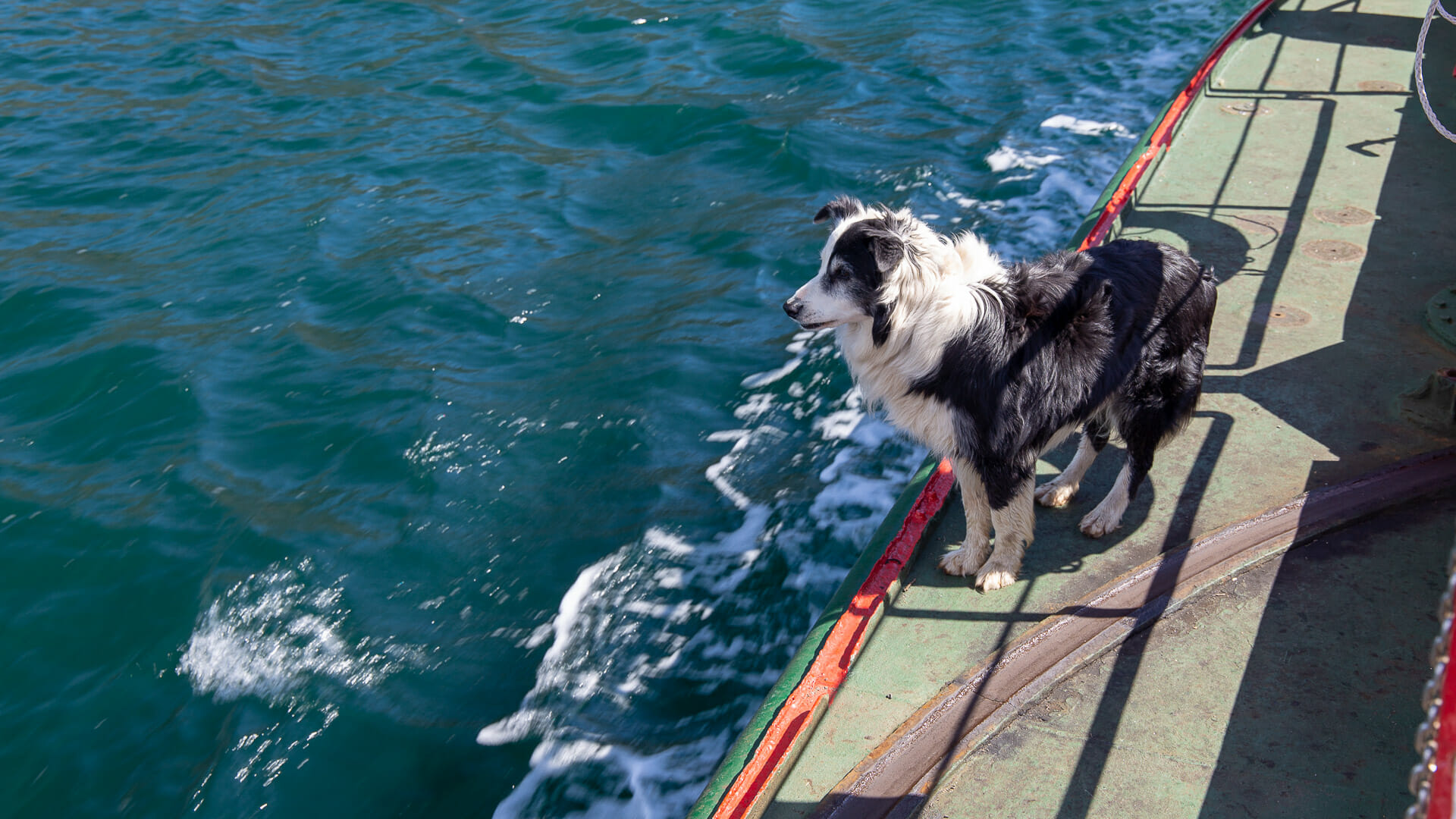
The crossing on the Glenelg-Skye Ferry is short. But neither is that the important thing. Watching it dock, seeing the turntable in action and, most importantly, the approach and descent over the mountain passes through sensational scenery all add up to a wonderful experience thanks to this little ferry in the middle of nowhere in Scotland.
Knowledge: About the Glenelg-Skye Ferry and the Straits
Ferries have been operating at the narrowest point between the mainland and the Isle of Skye for centuries. The drovers in the 18th century in particular used the “strait of Reatha”, as the Gaelic “Caol Reithe” is known in German. They tied eight animals to each other with ropes and then let them swim across while the drovers in the front of the boat held the rope. Up to 8,000 animals a year are said to have been transported from the Isle of Skye to the mainland in this way before being sold in the south.
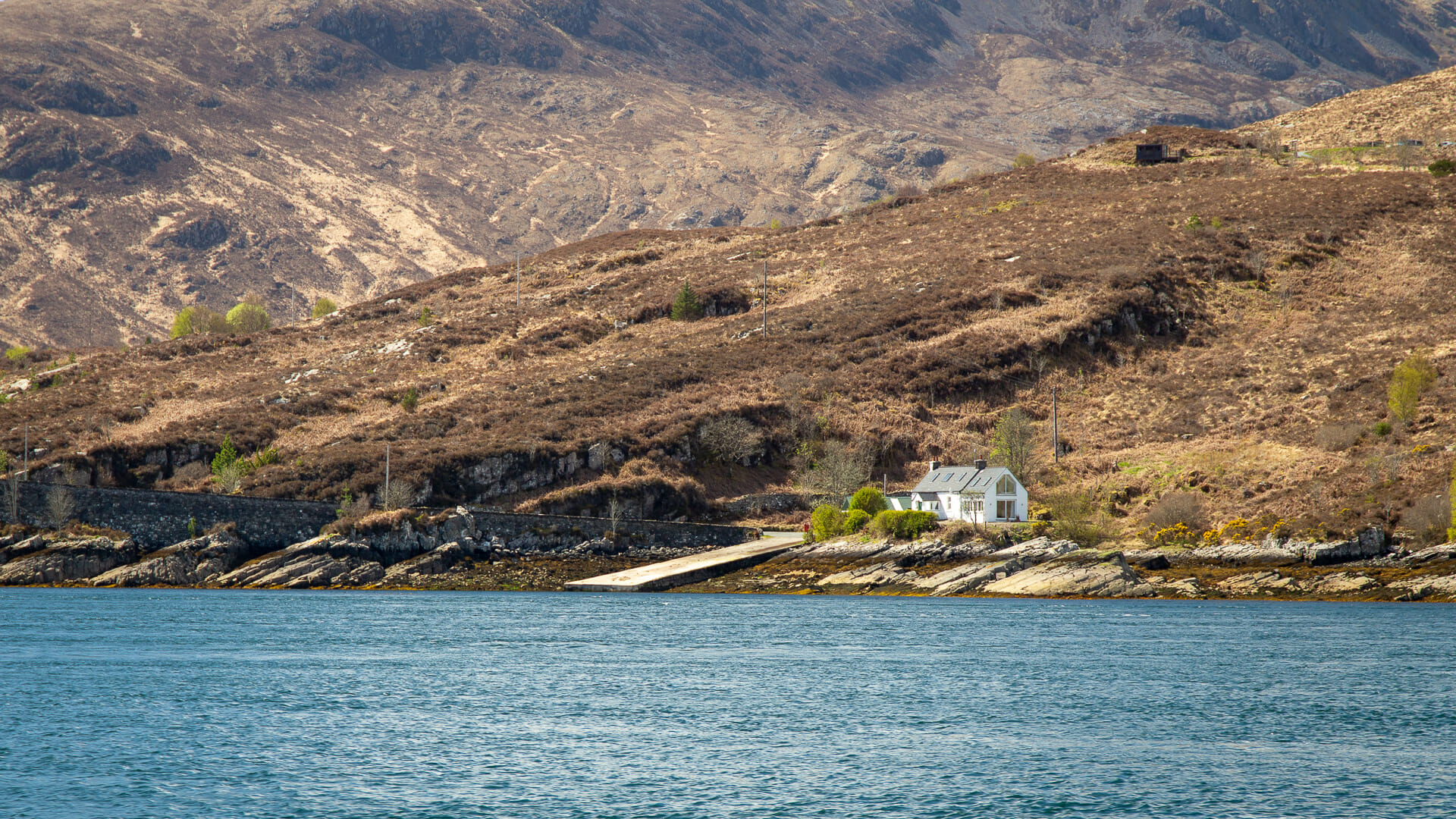
There were also two Inns here, which were inns that provided accommodation for the drivers. One still stands and can be rented as a holiday home.
Tip: Watching otters at Kylerhea
Near Kylerhea is the Otter Hide, an area where water martens can be observed from a shelter. However, this only works with patience, and there is no guarantee of success. In return, you may find other animals and rare plants along the way. The road to the parking area for the short and beautiful walk to Otter Hide branches off on the hill above the ferry dock.
Directions:
With sat nav: Enter “IV42 8NH” if coming from Skye or “IV40 8JZ” if coming from Shielbridge.
Without satnav: Coming from Skye, the small road to “Caol Reatha” or “Kylerhea” branches off at Breakish. It is a winding single track road that should be driven carefully. The view from the pass is brilliant though. From Shielbridge the road leaves the A87. There the ferry is already posted and the route is advertised as the “Glenelg Scenic Route”.